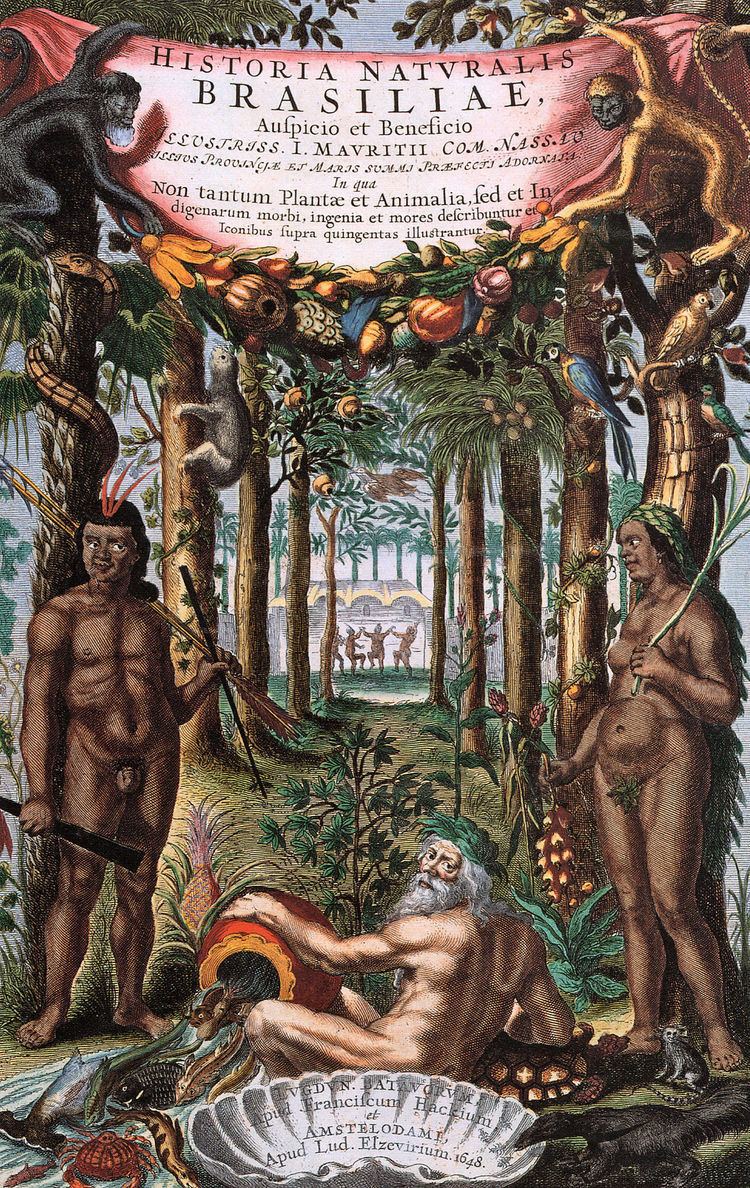Media type Print Originally published 1648 Genre Science Country Netherlands | Publication date 1648 Pages 293 pp Publisher Joannes de Laet | |
 | ||
Similar Visions of Savage Paradise, Grete Herball, De Historia Stirpium Comment, The natural history of Carolina, The anatomy of plants | ||
Historia Naturalis Brasiliae (English: Brazilian Natural History), originally written in Latin, is the first scientific book about Brazil, written by Dutch naturalist Willem Piso and published in 1648. Piso makes use of observations made by the German naturalists Georg Marcgrave, and H. Gralitzio, in addition to John de Laet. It was dedicated to John Maurice, Count of Nassau.
Though referring to Brazil throughout the text, the authors in fact write of the coastal strip of the Northeast, occupied by the East India Company. It is based on Piso's trip to Brazil in 1637 and offers an important early western insight into Brazilian flora and fauna by analysing plants and animals and studying tropical diseases and indigenous therapies.
It was edited, as stated on its title page, in: Lugdun. Batavorum: Apud Franciscum Hackium ; et Amstelodami: Apud Lud. Elzevirium - Latin name of the prestigious Elsevier publisher, which still exists.
The work consists of a single volume, originally measuring 40 centimetres (height) and its full title, with subtitle, is: " Historia naturalis Brasiliae ...: in qua non tantum plantae et animalia, sed et indigenarum morbi, ingenia et mores describuntur et iconibus supra quingentas illustrantur ".
The Brazilian physician and researcher Juliano Moreira said of Piso's work: 'This clearly masterful work, when carefully reexamined, shows, at each perquisition, new excellences, and thus it is still one of the most authentic glories of Dutch medical literature. We owe to Pies a description, so accurate and meticulous, of the then reigning endemics in Brazil and the means of treating them. He observed the yaws, tetanus, various types of paralysis, dysentery, hemeralopia, maculopapular. He described Ipecac and emeto - cathartic qualities, which aboriginals used long before the famous doctor Adrian Helvetius, grandfather of the notable French philosopher Claudio Adriano Helvetius received from Louis XIV a thousand louis gold, titles and honors for having discovered exactly those same therapeutic virtues. The Treaty of Helvetius titled "Remède contre le cours du ventre." dates from 1688'.
